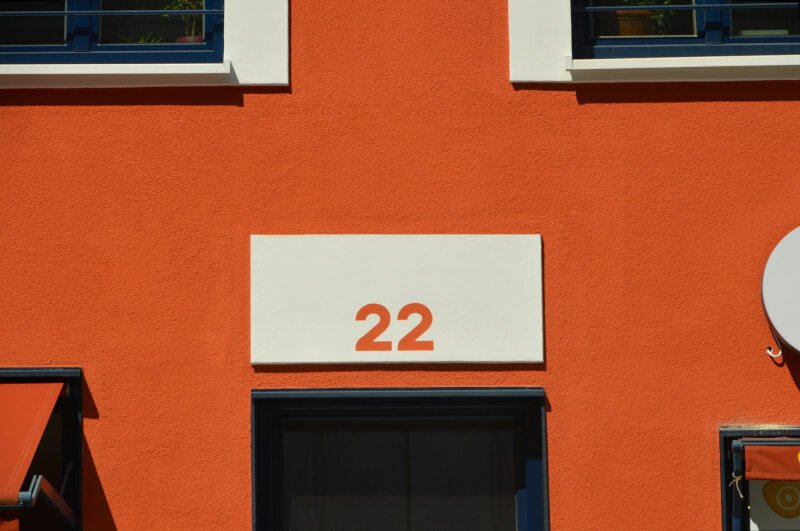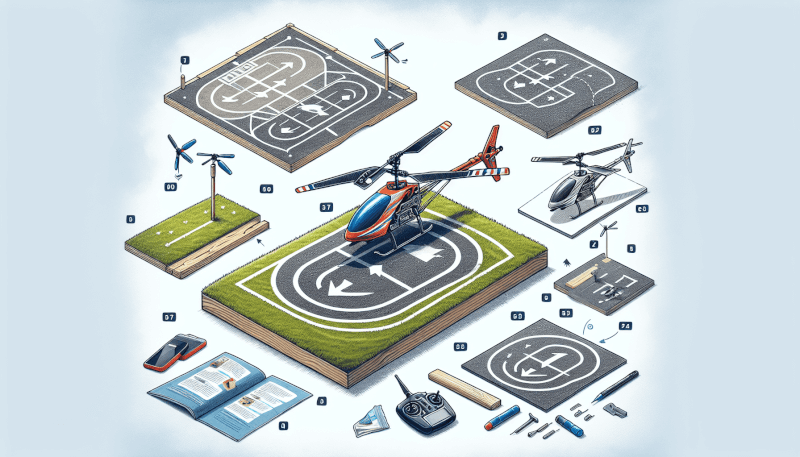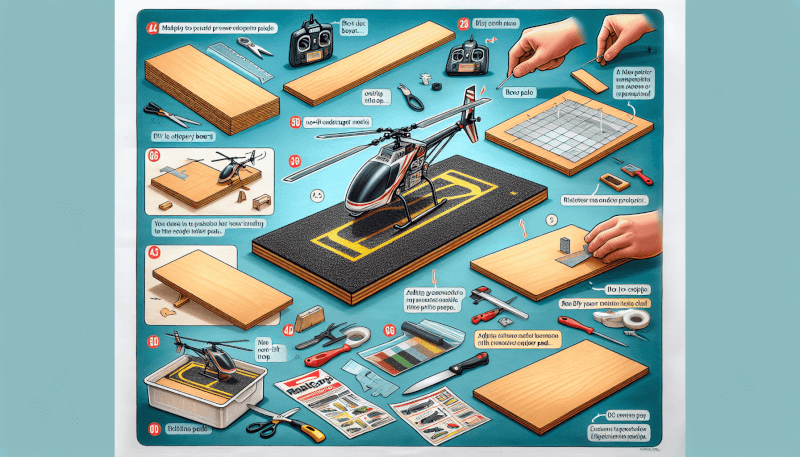In this article, you will discover a step-by-step guide on how to create your very own DIY RC Heli Landing Pad that guarantees precision landings. Whether you’re a beginner or an experienced RC helicopter enthusiast, having a dedicated landing pad can significantly enhance your flying experience. We will provide you with all the necessary materials, measurements, and instructions to ensure that your landing pad is not only functional but also aesthetically pleasing. Get ready to elevate your RC heli game and impress all your fellow hobbyists with this simple yet effective project.
Materials Needed
To make your own DIY RC heli landing pad, you will need the following materials:
- Cardboard or plywood: This will be used as the base for your landing pad.
- Measuring tape: Essential for accurately measuring the dimensions of your RC heli.
- Marker or pen: To mark the outline of the landing pad on the cardboard or plywood.
- Utility knife: To carefully cut the landing pad shape.
- Paint or adhesive vinyl: For creating a visually appealing design on the landing pad.
- Ruler or straight edge: To ensure clean lines and precise measurements.
- Double-sided adhesive tape or glue: To attach the landing pad to the ground.
- Optional: LED lights – If desired, these can enhance visibility during night flights.
Now that you have gathered all the required materials, let’s move on to the step-by-step process of making your own DIY RC heli landing pad for precision landings.
Step 1: Measure and Mark
The first step in creating your landing pad is to measure the dimensions of your RC heli. It’s important to have an accurate idea of the size of the helicopter to ensure that the landing pad is an appropriate size.
Using a measuring tape, carefully measure the length and width of the RC heli. Once you have the measurements, use a marker or pen to mark the outline of the landing pad on the cardboard or plywood. Make sure to leave some extra space around the outline to allow for any adjustments or additions later on.

Step 2: Cut the Landing Pad
With the outline marked on the cardboard or plywood, it’s time to cut out the landing pad shape. Use a utility knife to carefully cut along the marked outline, ensuring smooth and clean cuts. Take your time and be cautious while using the utility knife to avoid any accidents.
Once the shape is cut out, check for any rough edges and use sandpaper to smooth them out if needed. Having a clean and well-shaped landing pad will not only enhance its appearance but also ensure a safe and sturdy landing surface for your RC heli.
Step 3: Add Design and Visibility
Now that you have the basic landing pad shape, it’s time to get creative and make it visually appealing. You can paint the landing pad with bright colors or use adhesive vinyl to create a unique design. Consider adding eye-catching patterns or even your own personal touch to make it stand out.
If you plan on flying your RC heli during nighttime, adding LED lights can greatly enhance visibility. You can attach the LED lights along the outer edges of the landing pad or create a pattern to guide your helicopter’s landing. This will not only look cool but also ensure safer flights during low light conditions.

Step 4: Create Anti-Slip Surface
To provide traction for your RC heli during landings, it’s important to create an anti-slip surface on the landing pad. This will prevent the helicopter from sliding or skidding upon touchdown, allowing for more precise and controlled landings.
Measure and cut strips of adhesive vinyl or use double-sided adhesive tape to create the anti-slip surface. Apply these strips or tape to the top surface of the landing pad, ensuring that they cover enough area for the RC heli to land securely.
Step 5: Attach Landing Pad to the Ground
To ensure stability and prevent any movement during landings, securely attach the landing pad to the ground surface. This can be done using double-sided adhesive tape or glue.
Apply the adhesive tape or glue to the bottom surface of the landing pad and carefully position it on the ground. Press down firmly to ensure a strong bond and make sure the landing pad is level to provide a safe landing area for your RC heli.

Step 6: Test and Adjust
With your DIY RC heli landing pad ready, it’s time to test it out. Take your RC heli for a spin and observe how it lands on the landing pad. Pay attention to the precision and stability of the landings.
If you notice any issues or areas that can be improved, make the necessary adjustments. This could include adding markings or indicators on the landing pad to help with positioning or making slight modifications to the shape or design.
Step 7: Maintenance and Durability
To ensure the longevity and effectiveness of your landing pad, regular maintenance is crucial. Periodically check the landing pad for any damage or wear and tear. If you notice any sections that are damaged, repair or replace them promptly.
When not in use, it’s important to store the landing pad in a dry and safe place. This will protect it from any weather-related damage and ensure it remains in optimal condition for future use.

Safety Precautions
While operating your RC heli, it’s important to follow certain safety precautions to ensure a safe and enjoyable experience. Here are some key safety measures to keep in mind:
- Always fly your RC heli in a designated flying area, away from populated areas or potential hazards. This will help prevent accidents and ensure the safety of yourself and others.
- Keep the landing pad away from any obstacles or obstructions that could interfere with your RC heli’s flight path. Clear the surrounding area to provide a safe and unobstructed landing zone.
- Familiarize yourself with local regulations and guidelines for safe RC heli flying. Different areas may have specific rules and restrictions that need to be followed to maintain safety.
Conclusion
By following these simple steps and considering the necessary safety precautions, you can create your own DIY RC heli landing pad for precision landings. Not only will it enhance the accuracy and stability of your landings, but it will also add a touch of creativity and style to your RC heli operations.
Remember to gather all the required materials, measure and cut the landing pad shape, add a visually appealing design and anti-slip surface, securely attach it to the ground, and test and adjust as needed. With regular maintenance and care, your landing pad will provide a safe and reliable landing zone for your RC heli for years to come. Enjoy smoother landings and have fun exploring the exciting world of RC helicopter flying!



